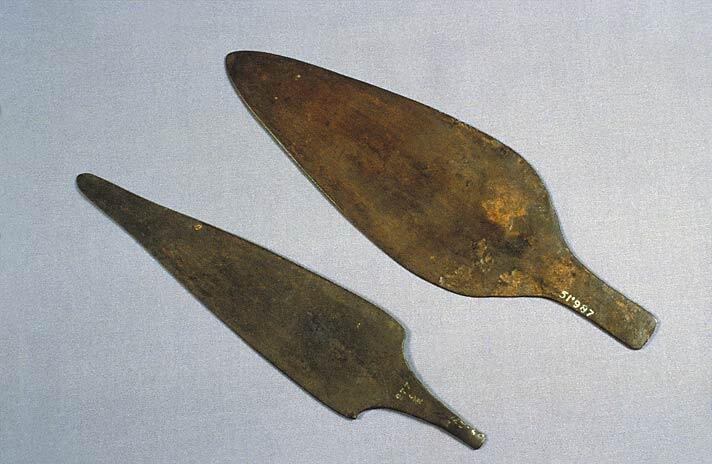Whether or not the ancient Indus civilization was peaceful or not has intrigued a number of scholars and led to books like Jane McIntosh's A Peaceful Realm (2001). The apparent lack of weaponry and depictions of warfare, possibly ideas on the supposed egalitarianism of Indus civilization have led to a preponderance of this hypothesis. As this article shows, it is rooted in observations made by early excavators, including John Marshall and Ernest Mackay. Nonetheless, this does not make it true as Edward Cork argues: "Life beside the ancient Indus may not have been so peaceful and egalitarian as has sometimes been thought. Arguing from weapons, the author shows that Harappans only appear to be militarily under-endowed in comparison with Mesopotamians because their assemblages are derived from settlement finds rather than grand tombs" (p. 411).
His strategy is to argue that not only is the initial evidence for speculations on the Indus civilization's peacefulness problematic, but that other ancient civilizations also show a similar lack of items proponents believe prove the civilization's peacefulness. For example, "Swords only appeared relatively late in the Near East (Postgate 1992: 249), not becoming common until the Iron Age. There is therefore no reason to suppose that the lack of swords in the Indus Civilisation reflects an absence of hand-to-hand combat" (p. 414). Most important though is his look at where weaponry-related finds have been made: "Arguments emphasising the simplicity of Harappan weapons also ignore the fact that the bulk of complex Mesopotamian weapons (and weapons in general) derive from burial and votive deposits (Philip 1988). Items from these deliberately structured deposits clearly do not reflect social reality, and are not comparable with Harappan weapons, which derive exclusively from domestic contexts" (p. 416). He goes on show how the percentage of what can be termed as tools or weapons in Harappan and Near Eastern sites given the burial caveat is comparable: "Primarily, defined weapons’ are rare at all settlements considered, from the Near East to the Indus. The claim that they are less numerous in the Indus can be rejected outright. Secondly, the proportion of the assemblages composed of ‘tool/weapons’ is often greater at Indus sites than at Near Eastern sites" (p. 419).
This is not to say there are not differences, as his conclusion acknowledges: "It is very clear that the patterns evident in the distribution, design and possibly function of Mature Harappan metal weaponry differ from those in the comparative centres selected. Although there is a relative abundance of blades in Harappan urban contexts, this might be argued to imply wider access to copper and bronze tools by the general populace than in Mesopotamia and Egypt. The absence of more complex technological forms and especially of weapons made with precious metals and stones may suggest that the Harappan elite did not use weapons as symbols of power to differentiate themselves from the non-elite population in the same way that Mesopotamian elites did. It does not necessarily follow, however, that the Harappan elite did not use weapons, or use warfare as a method of social control, or for political and/or territorial gain, or that the nature and function of elite power did not involve these weapons. The absence of ‘high statu? weaponry suggests either that weapons were simply not a significant part of elite identity (which is entirely different to suggesting that weapons were not used by the Harappan elite), or that they did not enter the archaeological record in the same way" (pp. 420-421).
Whether or not one entirely agrees with Cork, his work does provide a welcome corrective to those who too quickly seem to believe in something very unusual about this civilization. And if it was peaceful, for how long and when – see for example Gwen Robbin Schugs evidence for violence towards the latter part of Harappan Civilization.
See our Q and A with a number of major scholars on this How peaceful was Harappan Civilization?
Image: Copper/bronze weapons from Mohenjo-daro/Harappa

